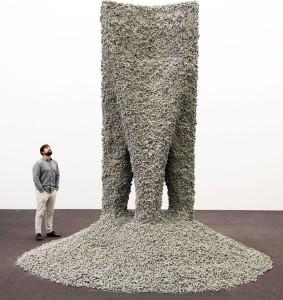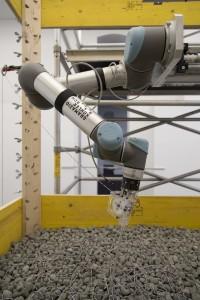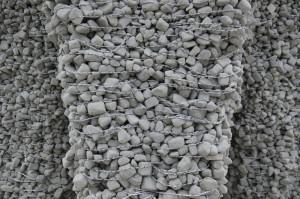 Architecture is generally a pretty permanent thing. Sure, nothing is truly permanent, but a structure built from concrete, metal and other heavy-duty materials is obviously built to last. So when you hear the term “temporary concrete structure,” well, it kind of sounds like an oxymoron, doesn’t it? Not anymore, says a team of American and German researchers from two universities. Gramazio Kohler Research of ETH Zurich and the Self-Assembly Lab at Massachusetts Institute of Technology have come up with what sounds like the impossible: reversible concrete.
Architecture is generally a pretty permanent thing. Sure, nothing is truly permanent, but a structure built from concrete, metal and other heavy-duty materials is obviously built to last. So when you hear the term “temporary concrete structure,” well, it kind of sounds like an oxymoron, doesn’t it? Not anymore, says a team of American and German researchers from two universities. Gramazio Kohler Research of ETH Zurich and the Self-Assembly Lab at Massachusetts Institute of Technology have come up with what sounds like the impossible: reversible concrete.
At this year’s Chicago Architecture Biennial, the team presented “Rock Print,” a thirteen-foot-tall sculpture made from only rocks and string. The sculpture was built using the principle known as “jamming,” in which material is packed so tightly together that it holds its shape without a container. The material, in this case, was synthetic “rocks” made from crushed glass and additives which are then heated until the glass expands into a foam-like aggregate. The material was created by the Swiss company Misapor as a lightweight, self-insulating concrete. The only other material used in the sculpture was simple, ordinary string.
To build the sculpture, the team set up a large, rectangular frame and began depositing layers of the rocks into it. After each layer was poured in, a giant 3D printing extruder laid down recycled-textile string on top of it, in a pattern predetermined by a complex algorithm. On top of the string went another layer of rock, and so on, until the rocks reached the top of the frame. The frame was removed, loose rocks were knocked to the ground, and what remained was Rock Print, a three-legged column of gravel that appears to magically stand upright. The five miles of string used to create the sculpture’s shape are only visible up close, and even then the string only seems to be draped loosely around the rocks, certainly not holding them together.
If you’d like to read about jamming in more detail, you can do so here, but essentially the rocks are held together by the force of their own compression. Rock Print can withstand tremendous force, but can be disassembled as easily as it was assembled, hence the term “reversible concrete.” No wrecking balls, no jackhammers, and, most importantly, no waste: the string is unwound, the rocks are packed up, and all materials can be used again. The structure demonst rates the potential for 3D printing technology to be used on a large scale with inexpensive, reusable materials and robotic fabrication.
rates the potential for 3D printing technology to be used on a large scale with inexpensive, reusable materials and robotic fabrication.
“There is still a lot of interdisciplinary research needed to fully understand and leverage future digital fabrication principles at a full building scale,” said Professor Matthias Kohler of Gramazio Kohler Research, “but after ten intensive years of research in the field, I am positive that such new principles will not only lead to exciting architecture projects, but also to a new digital building culture – possibly to a socially relevant transformation of our built environment.”
What are your thoughts on this piece of work? Let us know in the Rock Print Forum thread on 3DPB.com. Rock Print can be seen at the Chicago Architecture Biennial until January 3rd. Watch the amazing process that went into building Rock Print below:
Subscribe to Our Email Newsletter
Stay up-to-date on all the latest news from the 3D printing industry and receive information and offers from third party vendors.
You May Also Like
3D Printing Unpeeled: New Arkema Material for HP, Saddle and Macro MEMS
A new Arkema material for MJF is said to reduce costs per part by up to 25% and have an 85% reusability ratio. HP 3D HR PA 12 S has been...
3D Printing News Briefs, January 20, 2024: FDM, LPBF, Underwater 3D Printer, Racing, & More
We’re starting off with a process certification in today’s 3D Printing News Briefs, and then moving on to research about solute trapping, laser powder bed fusion, and then moving on...
3D Printing Webinar and Event Roundup: December 3, 2023
We’ve got plenty of events and webinars coming up for you this week! Quickparts is having a Manufacturing Roadshow, America Makes is holding a Member Town Hall, Stratafest makes two...
Formnext 2023 Day Three: Slam Dunk
I’m high—high on trade show. I’ve met numerous new faces and reconnected with old friends, creating an absolutely wonderful atmosphere. The excitement is palpable over several emerging developments. The high...

































